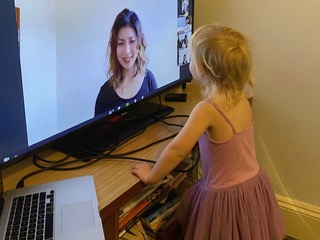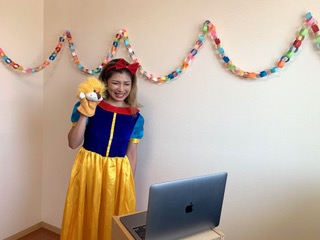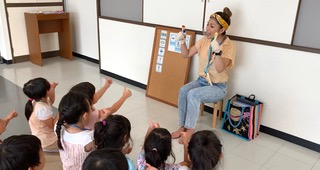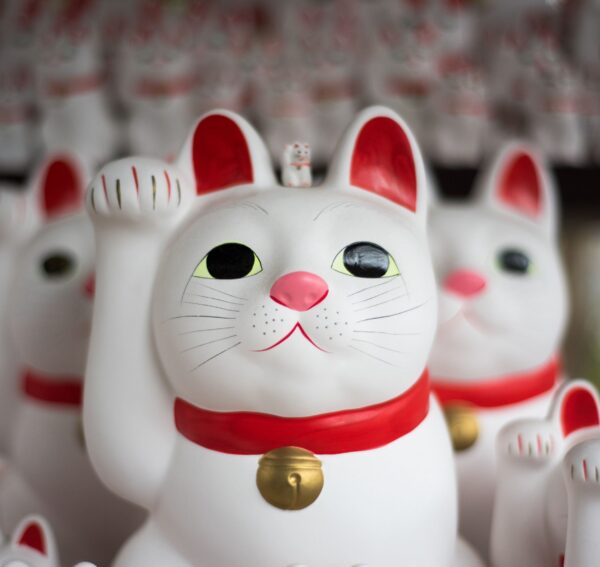Maintaining connection while learning online – a Japanese educators story

Having returned to Japan after a period of working in Australia, educator Misaki Nakagawa was faced with navigating the challenges of a rapid transition to online learning, struggling with questions familiar to many Australian educators – how will I maintain a connection with the children I teach? What will happen when they return to onsite learning?
Ms Nakagawa kindly shared her story exclusively with The Sector as educators around the country traverse the challenges of the pandemic, and the changes it has brought to early childhood education and care (ECEC).
My name is Misaki Nakagawa, in Japanese my name means ‘stay beautiful,美 and carry big hope 希 like the ocean 沙’.
From a young age I always knew I wanted to be a teacher. Born and raised in Japan I could have just studied ECEC in my country, but I have always loved to travel, and fell in love with Australia. Visiting more and more I came to know about Australia providing ECEC, and so I moved to Australia to study a Diploma of Early Childhood Education at TAFE.
I was inspired and fascinated by the totally different education system in Australia compared to Japan and I enjoyed the pathway to become an educator in Australia. After completing the course, I worked at childcare centres and preschools in Newcastle, New South Wales, and loved it.
I couldn’t have been happier when I was selected as staff member of the month at a centre that caters for more than 100 children and 40 staff members. It was such a wonderful achievement for me, especially for an educator who came from another country, speaking English as a second language, and having a different background and culture.
Before the coronavirus pandemic, I had to leave the centre I loved working for and come back to Japan. Today, I would like to share the story about my online teaching experience.
Like so many educators around the world, my first experience in online teaching was during the COVID-19 crisis. Returning to in-person teaching in Japan, after our first peak of COVID-19, has taught me a lot about transitioning from in-real-life to online and back again, with some unintended, surprising and beautiful outcomes.
I teach English to young Japanese children, and during COVID-19 we had to quickly adapt and move to an online delivery model. For the last four months I have done online lessons for young children aged between two and six years of age, and I have come to realise how much these digital connections were meaningful for children during these times.
The teaching method I used is based on a musical theory for early years learning – eurhythmics – which supports children to naturally learn a second language through singing, moving, listening, creating and playing musical instruments.
I usually have face-to-face lessons with another music teacher at a community centre in Ibaraki, Japan, however as the coronavirus situation became worse it became quite difficult for us to continue our lessons as usual.
The number of new cases rose dramatically at the end of March in Japan. As Japan is widely known as a clean and hygienic country, it is common for us that people wear masks during a flu season, but hygiene practices became more serious and even the action of high- fives have been concerned as a high-risk contact behaviour.
Since our lessons include a lot of moments where we touch each other, hold hands, and give high-fives and cuddles, it must have been difficult for the young children to understand the concept of social distancing so suddenly. And in April, the Japanese government declared a state of emergency and we were not allowed to gather anymore. All the schools and community centres were closed from April to late June.
As adults, we were shocked, disappointed, and unsure about what the future would hold.
I struggled to think of the right words to reassure children as an educator. We knew the children were not aware of what had been happening all over the world, and for them, a lot of fun time at school, and outside of school had been taken away arbitrarily.
While mask wearing in Japan is common during cold and flu season, (you would stand out without a mask), it is hard to see facial expressions with a mask and it was sad that the children couldn’t even see smiles of other people, and they were also not allowed to touch and hug friends and teachers even when they wanted to. Everything has been done for keeping them safe, but I felt so sorry for children to live their childhood with these strict rules.
As an early childhood educator, I asked myself what I can do for them from home, and I decided to start online lessons, although I wasn’t sure how long young children could stay focused on a screen. I had no experience teaching online, and my learning journey began with researching to learn more about how to best design and run online education.
I wanted to make the online lesson the same as a usual lesson, to maintain a sense of stability. So I set up two cameras in my room, one was for my head and shoulders to be seen singing with puppets and reading a book, and another one was for my full body to be seen dancing and moving around.

I also had another teacher playing the piano from her home, so we tried to reduce time lags for playing the piano, singing and dancing all together. It took a while to set up and organise everything, but it was worth all the effort when we were able to see all the children’s happy faces on the screen.
In order to keep their attention for 40 minutes, we provided lots of fun activities using as much of the strengths of the screen as possible.
This included drawing on a shared screen, virtual experiencing, showing an object in perspective and so on. Although it was quite hard to tell how the children have felt about online lessons from little screens of each child, another teacher and I have done our best to entertain and make them feel happy for three months.
Then on 4 July we were finally allowed to have a face-to-face lesson at the community centre just like before. And as the children walked into the room, they ran to me excited and happy! It was very surprising because before this they used to be very shy and always hide behind their mums.

I wonder if their previous shyness was because I speak only English in my lessons? For some children, they may feel pressured when speaking another language, which may have been a barrier in talking to me in English, and made them hesitant to come to me.
However, it was amazing what happened the day we started back. At our first lesson after the three months online, all the children came to me with big smiles and wanted to talk to me without any shyness and hesitation.
All I can think is that is probably because, during the stay-home period, the children kept seeing my face every week and became more familiar with me during such an uncertain time. Or that taking an online lesson must have been like watching Emma from the Wiggles for them! (In online lessons I dressed up like a pop-star, princess and Minnie Mouse to get attention from children).
Anyhow, it seems like the children have developed more of a sense of attachment with me now. I feel a much stronger connection with the children now too.
I would not say online teaching is the best learning method, especially considering young children’s screen times, however, it was the best way to connect and build up relationships for me and the children during the COVID-19 crisis. I am very happy and proud of our stronger bond and we got to stay together.
Popular

Workforce
Quality
Research
When did it start to go wrong?
2025-12-18 08:00:46
by Fiona Alston

Quality
Policy
Provider
Emergency Action Notices issued to three South Australian ECEC services over mobile device management concerns
2025-12-18 06:31:16
by Fiona Alston

Quality
Practice
Research
Curiouser and Curiouser: What Alice helps us see about who should teach
2025-12-19 07:15:35
by Contributed Content
















